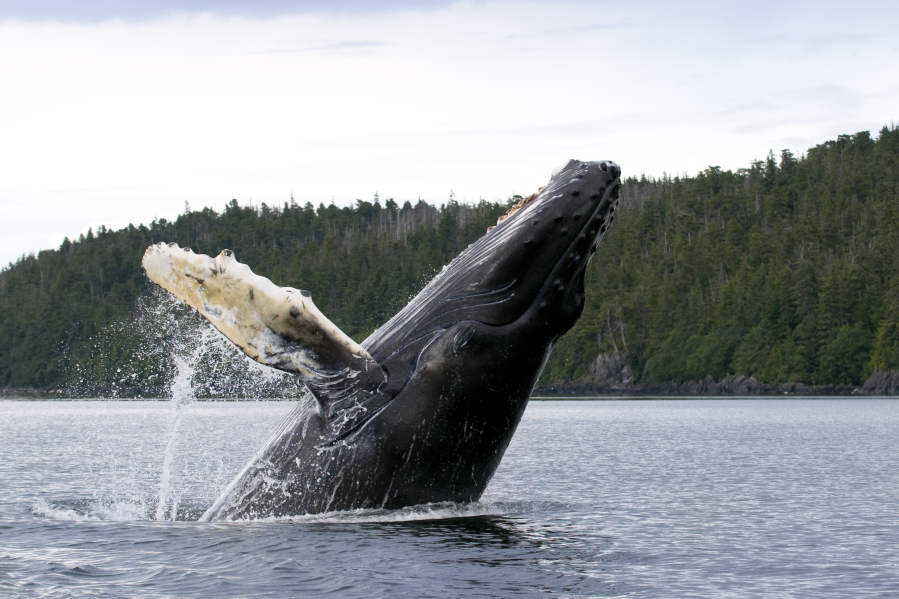BELLINGHAM — Researchers and crews with whale-watching boats from Bellingham to British Columbia are reporting an unprecedented number of sightings of North Pacific humpback whales this summer.
Once nearly wiped out by commercial whaling, the humpbacks are making a comeback – and it’s not just two or three whales in any one spot, but large groups of up to 15 or 20 together.
“It’s humpback heaven out there right now,” said Michael Harris, executive director of Pacific Whale Watch Association, a trade group that represents 38 tour operators in Washington and B.C. “About 20 years ago or so, we never saw humpback whales out there. The last three or four years, our crews started to see them all the time.”
Each spring, humpbacks migrate from Hawaii, Mexico and Central America to Alaska. Once hunted out by commercial whalers, humpbacks continue to resurface in this region, increasingly taking an inside passage through waterways as they head north in the spring, and then south in the fall. But once in the Salish Sea, they often make an extended stay before rejoining the migration.
Rhonda Reidy, a 20-year naturalist, marine educator and captain for Prince of Whales Whale Watching in Victoria, B.C., said the recent boom in humpbacks here may be the result of overlapping events.
First, the “humpback comeback” may be pushing more whales to look for food in the southern habitats along their migration route. It also may represent shifts in oceanographic and ecological conditions that could affect the food chain.
She plans to begin a doctoral study at the University of Victoria on their feeding habits. Humpbacks are largely opportunistic foragers that feed on krill and small schooling fish, like sardine, anchovy and herring.
“It’s a bit of a mystery what the regional diets of humpbacks are in B.C. and Washington waters,” she said. “But the high degree of foraging flexibility may be why humpback whales are doing so well.”
Regardless of the reason, their comeback has excited researchers and whale watchers alike. Humpbacks are best known for their breaching, lunge feeding, and vocalizations that make for great entertainment on commercial tours.
“In 20 years of running whale watch tours, I’ve never seen anything like what’s happening right now in Port Angeles,” said Capt. Shane Aggergaard of Port Angeles Whale Watch Company. “I expect these sightings to continue well into the fall.”
Whale numbers
Researchers believe there are more than 21,000 humpbacks now in the eastern North Pacific, up from about 1,600 when whale hunting was banned in 1966, and as many as 85,000 worldwide. In the spring of 2015, after a five-year review, NOAA Fisheries proposed to delist most populations of humpbacks.
Cascadia Research Collective in Olympia estimates about 1,600 humpback whales feed off the west coast of North America, including as many as 500 now off Washington and British Columbia. The animals usually visit from spring to fall before migrating in the winter to warm-water breeding and calving areas.
Senior biologist and Cascadia co-founder John Calambokidis has been studying humpbacks for more than three decades. His team is getting ready to tag humpbacks to track their movements and feeding habits.
He agreed with Reidy that the uptick in activity in regional waters is not due just to a population boom, but may also reflect a shift in habitat.
“Humpback whales have made a dramatic return to the Salish Sea in recent years and especially this year,” Calambokidis said. “We’ve had lots of humpback whales offshore in past years and now more of them are coming into the inland waters. That’s probably due to the increased numbers overall likely resulting in expanded areas of use, but also something to do with prey availability, which at this point is harder to determine in detail.”



